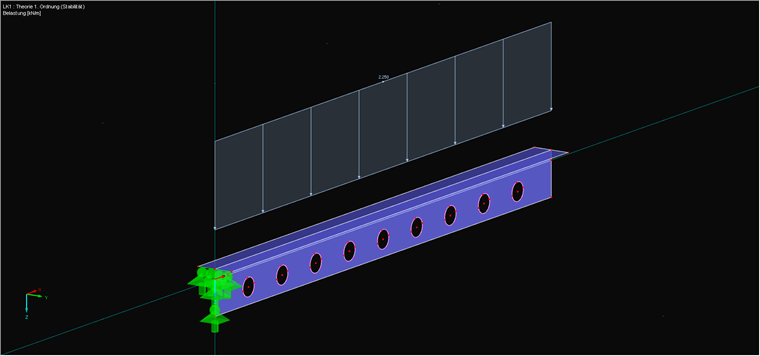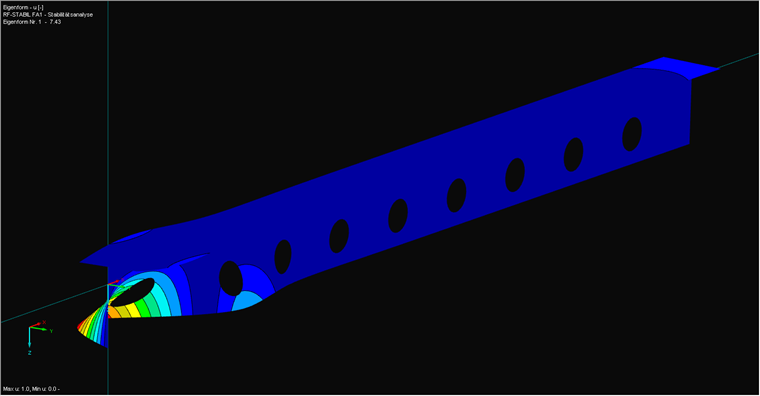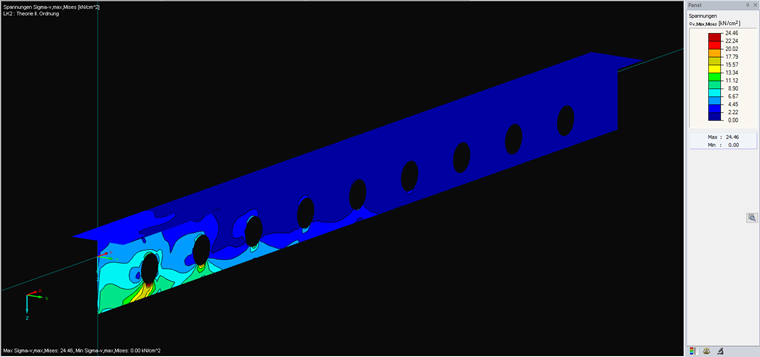The stability analysis for plate structures can be converted into a pure stress analysis if the calculation is performed according to the second-order analysis and the imperfection required by the standard has been applied to the structure.
Using the RF‑STABILITY and RF‑IMP add-on modules, you can create imperfections (or a predeformed FE mesh). The type of imperfection depends strongly on the structural component and the corresponding standard. For members that have been modeled as a plate structure, you can use the values from DIN EN 1993‑1‑1:2005 5.3. For planar surfaces, it is possible to use the values from DIN EN 1993‑1‑5:2006, Annex C, for example. For shells, the problem is much more complex and there are different approaches. I would advise against the generation of imperfections and perform the plate buckling design using the MNA/LBA concept according to DIN EN 1993‑1‑6, which does not require the application of an imperfection.
For example, if you want to design a surface model of a steel beam, you can proceed as follows:
- Select a load with relatively high axial forces (compared to other internal forces in the load case); in most cases, you can use the self-weight load case or a load combination with the corresponding self-weight. It may be necessary for each load combination to have an individual imperfection.
- Calculate the load combination according to the linear static analysis and use it as a basis for RF‑STABILITY.
- Find the first mode shape of a global failure using RF‑STABILITY.
- Use the calculated mode shape as a basis for an imperfection using RF‑IMP. It is possible to apply 1/300 of the beam length as an amplitude, for example.
- Create a load case combination that uses the created imperfection as a basis and is calculated according to the second-order analysis.
- Perform a stress analysis using this load combination, which is also the stability analysis of the structure.


